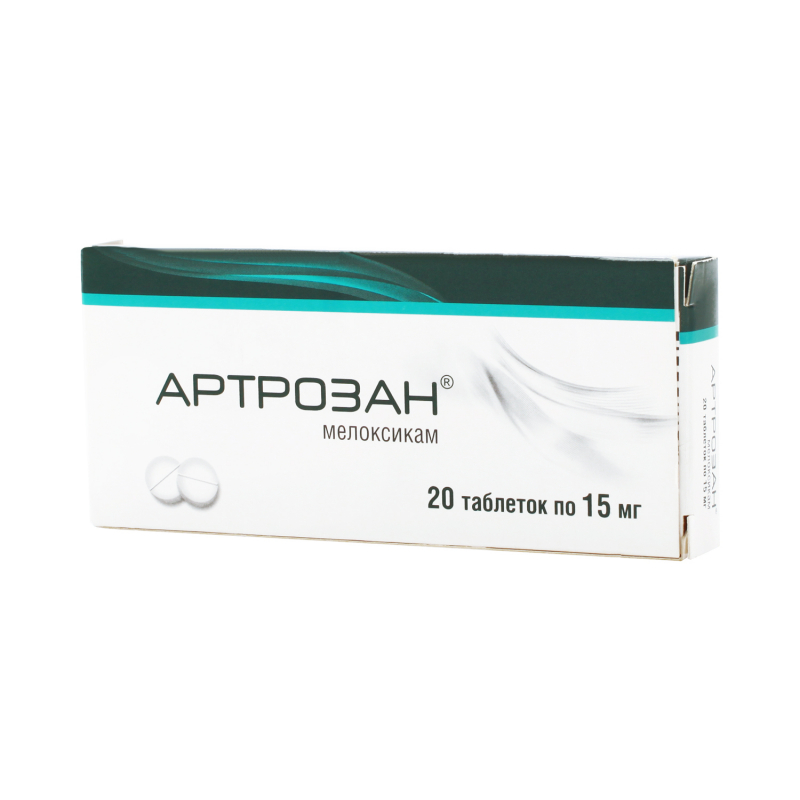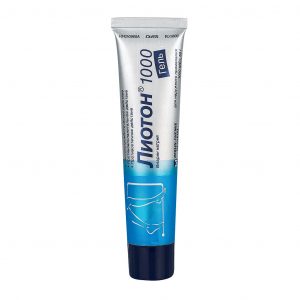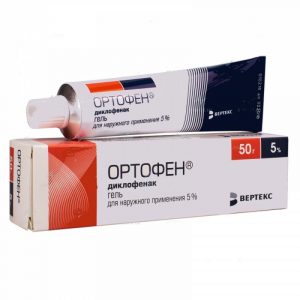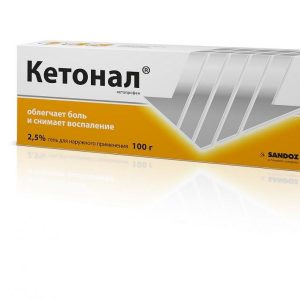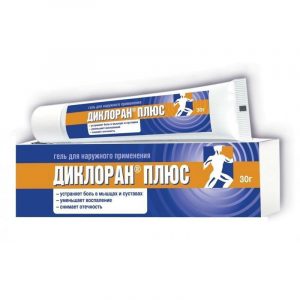Description
Release form
Tablets.
Packing
20 pcs. 15 mg each.
Pharmacological action
Artrozan ® is a non-steroidal anti-inflammatory drug (NSAID) that has anti-inflammatory, antipyretic and analgesic effects.
Belongs to the class of oxycams, is a derivative of enolic acid.
The mechanism of action is associated with inhibition of prostaglandin synthesis as a result of selective inhibition of the enzymatic activity of the second type cyclooxygenase (COX-2), involved in the biosynthesis of prostaglandins in the area of inflammation. When prescribed in high doses, prolonged use and individual characteristics of the body, selectivity for COX-2 is reduced. To a lesser extent, it affects the first type cyclooxygenase (COX-1), which is involved in the synthesis of prostaglandins that protect the gastrointestinal mucosa and take part in the regulation of blood flow in the kidneys. Due to the indicated selectivity of suppressing the activity of COX-2, the drug less often causes erosive and ulcerative lesions of the gastrointestinal tract.
Indications
Symptomatic treatment of inflammatory and degenerative diseases of the muscular-joint system, accompanied by pain, including:
Osteoarthrosis.
Rheumatoid Arthritis.
Ankylosing spondylitis (ankylosing spondylitis).
Osteochondrosis.
Use during pregnancy and lactation
Contraindicated in pregnancy and lactation.
Special instructions
Caution is advised when using the drug in patients in the history of which there are indications of peptic ulcer of the stomach and duodenum, and by patients on anticoagulant therapy. Such patients have an increased risk of erosive and ulcerative diseases of the gastrointestinal tract.
Caution should be exercised and daily diuresis and renal function should be monitored when using the drug in the elderly and patients with reduced BCC and reduced glomerular filtration (dehydration, chronic heart failure, cirrhosis of the liver, nephrotic syndrome, clinically pronounced kidney disease, diuretics, dehydration after major surgical operations).
In patients with a slight or moderate decrease in renal function (creatinine clearance 30-60 ml / min) dose adjustment is not required.
Patients taking both diuretics and meloxicam, should take enough fluids.
In case of allergic reactions (itching, skin rash, urticaria, photosensitivity) during treatment, you should consult a doctor to resolve the issue of stopping the drug.
Meloxicam, like other NSAIDs, can mask the symptoms of infectious diseases.
The use of meloxicam, as well as other drugs that block the synthesis of prostaglandins, can affect fertility, therefore it is not recommended for women planning pregnancy.
Influence on the ability to drive vehicles and control mechanisms
The use of the drug can cause headaches, dizziness and drowsiness. If these phenomena occur, you should refuse to drive vehicles and perform other potentially dangerous activities that require an increased concentration of attention and speed of psychomotor reactions.
Composition
1 tablet contains:
Active ingredient: meloxicam 15 mg.
Excipients: potato starch 94.5 mg, lactose monohydrate 150 mg, povidone (polyvinylpyrrolidone medium molecular weight medical) 4.5 mg, sodium citrate 27 mg, magnesium stearate 3 mg, colloidal silicon dioxide (aerosil) 6 mg.
Dosage and administration of
The drug is taken orally during meals at a daily dose of 7.5-15 mg.
Recommended dosage:
Rheumatoid arthritis: 15 mg per day. If necessary, the dose can be reduced to 7.5 mg per day.
Osteoarthrosis, osteochondrosis and other inflammatory and degenerative diseases of the muscular-joint system, accompanied by pain: 7.5 mg per day. With inefficiency, the dose can be increased to 15 mg per day.
Ankylosing spondylitis: 15 mg per day. The maximum daily dose should not exceed 15 mg.
In patients with an increased risk of side effects, as well as in patients with severe renal failure undergoing hemodialysis: the dose should not exceed 7.5 mg per day.
Side effects of
From the digestive system: more than 1% – dyspepsia, incl. nausea, vomiting, abdominal pain, diarrhea, constipation, flatulence 0.1-1% – a transient increase in the activity of liver transaminases, hyperbilirubinemia, belching, esophagitis, gastric or duodenal ulcer, gastrointestinal bleeding (hidden or obvious), stomatitis less than 0.1% – perforation of the digestive tract, colitis, hepatitis, gastritis.
From the hemopoietic organs: more than 1% – anemia 0.1-1% – leukopenia, thrombocytopenia.
From the skin: more than 1% – itching, skin rash 0.1-1% – urticaria less than 0.1% – photosensitivity, bullous rashes, erythema multiforme, incl. Stevens-Johnson syndrome, toxic epidermal necrolysis.
From the respiratory system: less than 0.1% – bronchospasm.
From the side of the central nervous system: more than 1% – dizziness, headache 0.1-1% – tinnitus, drowsiness less than 0.1% – emotional lability, confusion, disorientation.
From the CCC side: more than 1% – peripheral edema 0.1-1% – increased blood pressure, palpitations, hyperemia of the face.
From the urinary system: 0.1-1% – hypercreatininemia, increased serum urea concentration less than 0.1% – acute renal failure, no connection with meloxicam intake – interstitial nephritis, albuminuria, hematuria.
From the sensory organs: less than 0.1% – conjunctivitis, blurred vision.
Allergic reactions: less than 0.1% – angioedema, anaphylactic, anaphylactoid reactions.
Drug interaction
When used simultaneously with other non-steroidal anti-inflammatory drugs (including acetylsalicylic acid), the risk of erosive and ulcerative lesions and bleeding of the gastrointestinal tract increases.
With simultaneous use with antihypertensive drugs, the effectiveness of the latter may decrease.
With simultaneous use with lithium preparations, it is possible to develop cumulation of lithium and increase its toxic effect (it is recommended to control the concentration of lithium in the blood).
With simultaneous use with methotrexate, the side effect of the latter on the hematopoietic system is enhanced (the risk of anemia and leukopenia, periodic monitoring of the general blood test is indicated).
When used simultaneously with diuretics and cyclosporine, the risk of developing renal failure increases.
With simultaneous use with intrauterine contraceptives, the effectiveness of the latter may be reduced.
When used simultaneously with anticoagulants (heparin, warfarin), thrombolytic drugs (streptokinase, fibrinolysin), and antiplatelet agents (ticlopidine, clopidogrel, acetysalicylic acid), the risk of bleeding increases (periodic monitoring of blood coagulability is necessary).
With simultaneous use with colestyramine, the excretion of meloxicam through the gastrointestinal tract is accelerated.
When used concurrently with selective
With simultaneous use with intrauterine contraceptives, the effectiveness of the latter may be reduced.
When used simultaneously with anticoagulants (heparin, warfarin), thrombolytic drugs (streptokinase, fibrinolysin), and antiplatelet agents (ticlopidine, clopidogrel, acetysalicylic acid), the risk of bleeding increases (periodic monitoring of blood coagulability is necessary).
With simultaneous use with colestyramine, the excretion of meloxicam through the gastrointestinal tract is accelerated.
When used concurrently with selective
With simultaneous use with intrauterine contraceptives, the effectiveness of the latter may be reduced.
When used simultaneously with anticoagulants (heparin, warfarin), thrombolytic drugs (streptokinase, fibrinolysin), and antiplatelet agents (ticlopidine, clopidogrel, acetysalicylic acid), the risk of bleeding increases (periodic monitoring of blood coagulability is necessary).
With simultaneous use with colestyramine, the excretion of meloxicam through the gastrointestinal tract is accelerated.
When used concurrently with selective acetisalicylic acid) increases the risk of bleeding (periodic monitoring of blood coagulability is necessary).
With simultaneous use with colestyramine, the excretion of meloxicam through the gastrointestinal tract is accelerated.
When used concurrently with selective acetisalicylic acid) increases the risk of bleeding (periodic monitoring of blood coagulability is necessary).
With simultaneous use with colestyramine, the excretion of meloxicam through the gastrointestinal tract is accelerated.
When used concurrently with selectiveSerotonin reuptake inhibitors increase the risk of gastrointestinal bleeding.
Overdose
Symptoms: impaired consciousness, nausea, vomiting, epigastric pain, gastrointestinal bleeding, acute renal failure, hepatic failure, respiratory arrest, asystole.
Treatment: There are no specific antidotes and antagonists. In case of overdose of the drug – gastric lavage, intake of activated charcoal (within the next hour), symptomatic therapy. Forced diuresis, alkalinization of urine, hemodialysis are ineffective due to the high association of the drug with blood proteins.
Storage Conditions
Do not store above 25 ° C.
Keep out of the reach and sight of children.
Shelf life
3 years.
Deystvuyushtee substance
Meloxicam
otpuska IZ
pharmacy prescription
dosage form
tablets
f
Prescription
For adults as prescribed by a doctor, Children over 15 years old, Children as prescribed by a doctor
Pharmstandard-Leksredstva, Russia
